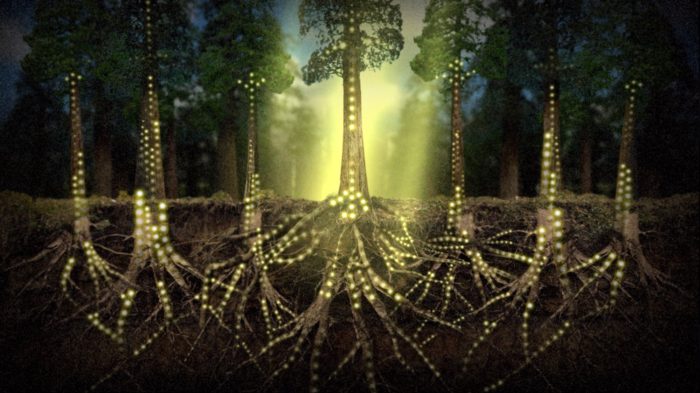Mycorrhizas are fungal associations between plant roots and beneficial fungi. The fungi effectively extend the root area of plants and are extremely important. The more we learn about these underground networks, the more our ideas about plants have to change. They aren’t just sitting there quietly growing. By linking to the fungal network they can help out their neighbours by sharing nutrients and information.
In mycorrhizal associations, plants provide fungi with food in the form of carbohydrates. In exchange, the fungi help the plants suck up water, and provide nutrients like phosphorus and nitrogen, via their mycelia. Since the 1960s, it has been clear that mycorrhizae help individual plants to grow.
Fungal networks also boost their host plants’ immune systems. That’s because, when a fungus colonises the roots of a plant, it triggers the production of defense-related chemicals. These make later immune system responses quicker and more efficient, a phenomenon called “priming”. Simply plugging in to mycelial networks makes plants more resistant to disease.
But that’s not all. We now know that mycorrhizae also connect plants that may be widely separated. Fungus expert Paul Stamets called them “Earth’s natural internet” in a 2008 TED talk. He first had the idea in the 1970s when he was studying fungi using an electron microscope. Stamets noticed similarities between mycelia and ARPANET, the US Department of Defense’s early version of the internet.
Film fans might be reminded of James Cameron’s 2009 blockbuster Avatar. On the forest moon where the movie takes place, all the organisms are connected. They can communicate and collectively manage resources, thanks to “some kind of electrochemical communication between the roots of trees”. Back in the real world, it seems there is some truth to this.
